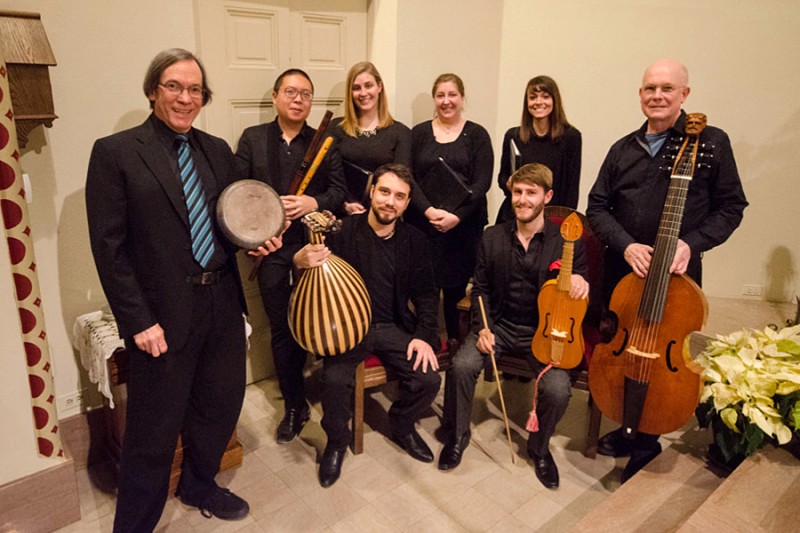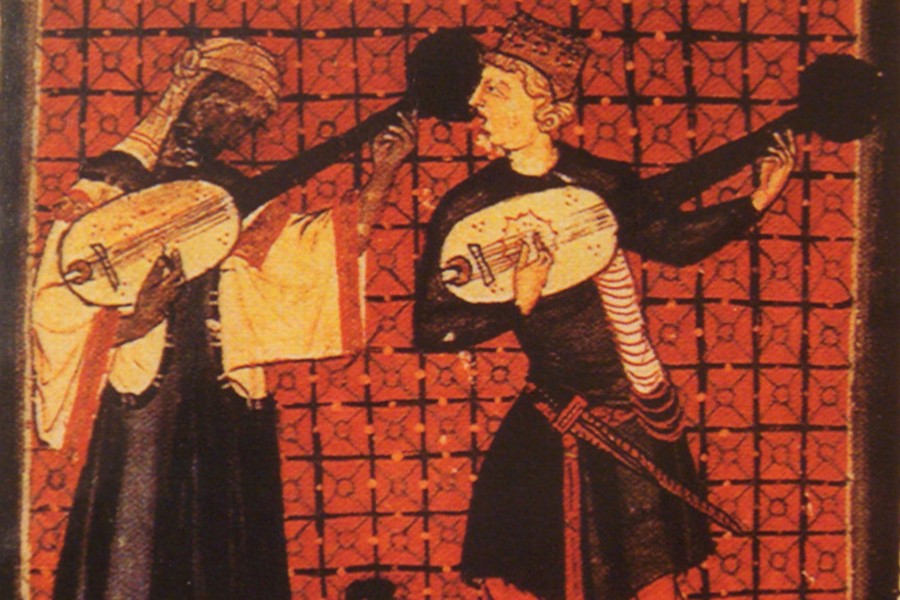For the past two seasons, Mark Cudek, chair of the Peabody Institute's Early Music Department, has included a concert of medieval Christian, Jewish, and Arabic music in the schedule for his ensemble, the Peabody Consort. He's called the program "Words and Music of Three Faiths," and its repertoire—the Cantigas de Santa Maria, Sephardic romances, and Arabic improvisations—date from the 13th century when Alfonso X was the King of Castile and Leon regions of what is now Spain.
This era was noted for its cultural and intellectual vitality. Alfonso employed Jewish and Muslim scholars in his court to translate Arabic and Hebrew texts into Castilian, such as Ibn al-Haytham's Configuration of the Universe and other Arabic scientific works. He also had scholars translate the Qur'an and Talmud into Castilian—which, given that both Jews (in 1492) and Moors (in the early 16th century) were eventually expelled from Spain under threat of exile or death—is a sobering reminder about how dramatically a state's rule of law can change.
In Alfonso X's court, however, all three religious groups coexisted, and sometimes they played music together. On March 6, Cudek and the Consort—which includes guest artist Jeffrey Grabelle (bass viola da gamba), Peabody alumni Julie Bosworth (soprano), Brian Kay (oud), Sara MacKimmie (soprano), Niccolo Seligmann (vielle), current Peabody undergrads Sarah Lynn (soprano) and Aik Shin Tan (flute, recorders), and Cudek himself (on the percussion instruments riq and doumbek)—present a special version of the program "Words and Music of Three Faiths" at the Bolton Street Synagogue in collaboration with the Institute for Islamic, Christian, and Jewish Studies. The concert will include readings of Christian, Jewish, and Muslim poetic texts by ICJS scholars Heather Miller Rubens, Benjamin Sax, and Homayra Ziad.
The Hub caught up with Cudek by phone to chat about this version of "Words and Music for Three Faiths," which he says will be the last performance of the repertoire until he takes the Consort and this program to the 2017 Indianapolis Early Music Festival.
How did this program come about, both in terms of the music and the collaboration? Were you looking to partner with the Institute for Islamic, Christian, and Jewish Studies and built the program around that effort?
The repertoire has been a pet project of mine for a while. It's music I'm really drawn to, and I've been performing the musical portions of this show with the Peabody Consort for the last two seasons. I've been programming medieval and Sephardic music for years. Two of my alumni, Brian Kay and Niccolo Seligman, are part of an award-winning trio, Division, that does a lot of Arabic music. Brian did two lute degrees at Peabody and is a fantastic oud player. And Niccolo plays any type of bowed string instrument. In this program he's playing a vielle, which is really just the medieval version of what eventually morphed into the violin. So I happily let them take over the Arabic set.
Another alum, Julie Bosworth, is a stunning singer and particularly adept at singing in both early and world music styles. She's been singing the Sephardic music with me for about six years now and is such a natural. The program is built around the three of them and with present students filling out other roles.
I wanted to do "Three Faiths" in a more expanded version and include readings from the various cultures and Sarah Hoover, special assistant to [Peabody] Dean [Fred] Bronstein, made the connection with ICJS.

Image caption: Mark Cudek (left), a member of the Peabody faculty since 1982, founded the Peabody Consort in 1996. The group performs 'Words and Music of Three Faiths' on Sunday at Baltimore's Bolton Street Synagogue.
Could you tell me a bit more about the program—I understand the Cantigas de Santa Maria is a medieval religious text set to music. I ask because I'm curious what an early musician can tell me about these musical forms. With Catholics, Jews, and, Arabs living around each other in Alfonso X's court, did their musical ideas—in instrumentation, rhythms, forms—influence one another at all?
Absolutely, but the problem is there's not a lot of documentation on this. The other problem is that so much of the music is not written down, and what was written down was often kind of skeletal, especially the instrumental music. There are poetic forms that go way back in the Arabic world that are picked up in the West, as well as the instruments themselves—for example, the oud is the ancestor of the western lute. So there's definitely a lot of cross-cultural influence.
The Christian music we're doing, the Cantigas de Santa Maria, is from the court of Alfonso X. There are over 400 cantigas and they're monophonic pieces—just melodies. The scores do not give the slightest hint of how to arrange this music, so many decisions are left up to the performers—which makes it really fun to do because there are many different approaches you can take. In fact, if you get two recordings of Cantigas from two different groups, you'll hear wildly different interpretations of the same piece. There are no tempo markings and no instrumentation mentioned—although in the primary source of the Cantigas there are miniature paintings depicting musicians, of the three faiths, and their instruments. So if anybody says these should be done just vocally without instruments, I think they're barking up the wrong tree.
Pardon my ignorance, but with three different religious groups found in Alfonzo X's court, is that kind of diversity unusual for the time period in terms of music? Was that amount of variety found in the early music of, say, the places we now call England, France, or Germany?
I don't think there was anywhere near the variety going on in the other countries that there was in the Iberian Peninsula. Though it was more isolated, you have these three groups cohabitating—not very often peacefully, but at least in Alfonso's court. Intellectuals were attracted regardless of their faith. He wanted knowledge and information and books written and translations done. He was a very wise ruler—as his name, El Sabio, implies—and obviously a great lover of music.
What can we learn about the past through music? What can knowing about musical and cultural traditions of these different people from this particular period in history tell us about how we're living today?
Well, one is that people of different faiths can actually get along together and share musical ideas and express themselves in very beautiful ways.
There are also many approaches to learning and making music. The Christian cantiga repertoire was the only music that was written down—the other repertories are from oral tradition. The Jewish music was not written down until the 20th century, and much of the Arabic music to my knowledge has still not been written down. We learned it by ear. So we are early musicians going way back in time and using learning and arrangement skills of classical, traditional, folk, and jazz musicians.
"Words and Music of Three Faiths" takes place March 6 at the Bolton Street Synagogue at 4 p.m. Tickets are $10, $5 for students and members of the Bolton Street Synagogue and ICJS.
Posted in Arts+Culture








